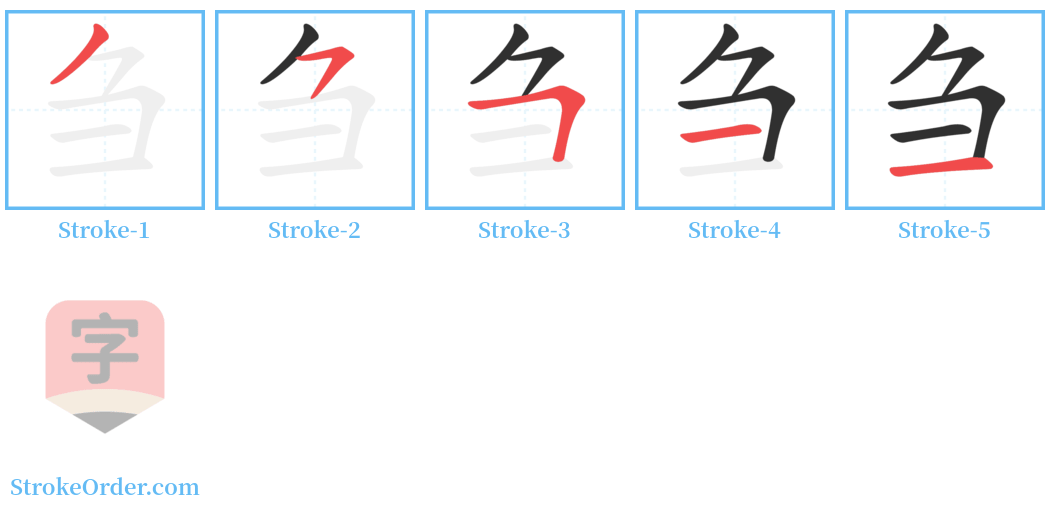刍 Stroke Order
Animated Stroke Order of 刍

Stroke Order Diagrams for 刍

Step-by-Step Handwriting Guide for 刍

Learn to Write Chinese Characters with Video Tutorials
Watch the video of writing the Chinese character "刍", learn the correct stroke order (笔顺) of the character "刍", and master the standard way of writing the character "刍".
Free Printable Handwriting Practice with Stroke Order: 刍
Printable Writing Practice Worksheet of "刍" in Portrait Orientation (Tian Zi Ge)

Printable Writing Practice Worksheet of "刍" in Landscape Orientation (Tian Zi Ge)

Information of 刍
Pinyin
chú
Radical
刀
Strokes
5 strokes
Usage
★★★★
Definition
(surname) / cut grass / hay / straw / fodder
刍 (chú)
1. 喂牲畜的草,亦指用草料喂牲口。
[En.] Fodder; also refers to the practice of feeding livestock with grass.
2. 割草。
[En.] Mow; to cut grass.
3. 草把。
[En.] Bundle of grass.
4. 喂牲畜的草:~秣(饲养牛马的草料)。反~。
[En.] Fodder; specifically refers to feed for cattle and horses. The opposite of~.
5. 割草:~荛(割草称“刍”,打柴称“荛”。指割草打柴的人。后常用作向人陈述意见的谦辞)。~言(常用来谦称自己的言论)。~议(同“刍言”)。
[En.] Mow; traditionally, cutting grass is referred to as "刍" while cutting firewood is referred to as "荛." It also refers to those who cut grass or firewood. It is often used as a humble expression when stating one’s opinion. "刍言" or "刍议" are used to refer to a person's humble discourse.
6. 草把:~灵(古代送葬用的茅草扎的人马)。
[En.] Bundle of grass; specifically refers to the bundles of grass made from reeds used during ancient funeral processes.
7. 浅陋,鄙俗。
[En.] Meager; refers to something mediocre or vulgar.
8. 【造字法】:象形兼会意。甲骨文字形,从又(手)从草,表示以手取草。
[En.] Etymology: The character is a combination of pictographic and semantic elements, depicting a hand taking grass.
9. 例:刍牧(割草放牧)。
[En.] Example: 刍牧 (to mow and graze livestock).
10. 食以刍叔。
[En.] Example from literature: "Eat using fodder."
11. 谷类植物的茎杆。
[En.] The stems and stalks of cereal plants; refers to straw.
12. 割草的人。
[En.] Mower; a person who cuts grass.
13. 吃草的牲口。
[En.] Animals that feed on grass; refers to livestock such as cattle and sheep.
14. 如: 刍语, 刍言, 刍论 (草野鄙陋者的议论; modest expressions for simple ideas).
[En.] Examples: "刍语" (humble speech), "刍言" (statements made by humble individuals), "刍论" (simple discussions).
Input Method for 刍
Pinyin
chu2
Wubi
qvf
Cangjie
nsm
Zhengma
rxb
Four Corner
27177
Unicode
U+520d
Same Pronunciation Characters